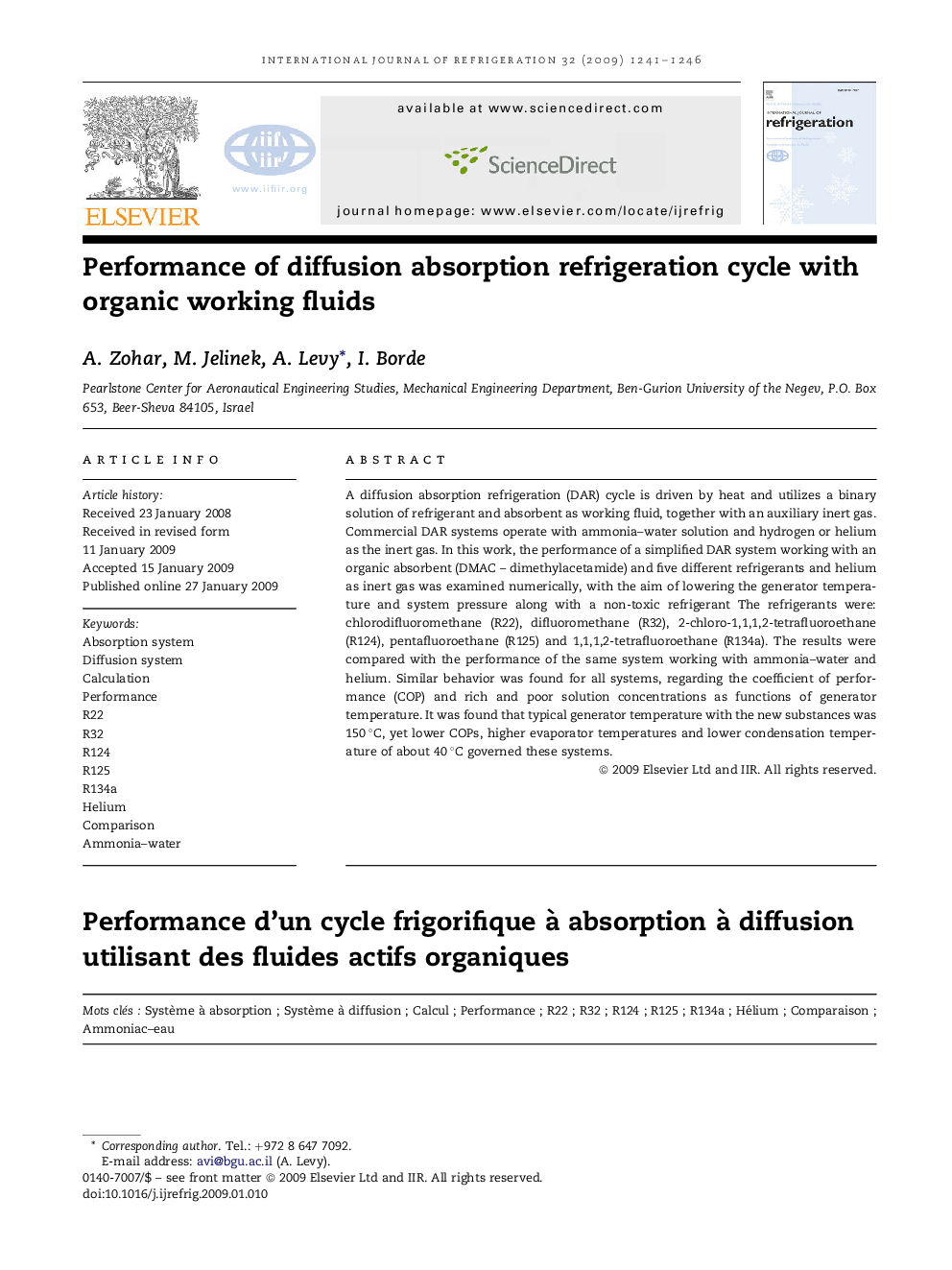| Article ID | Journal | Published Year | Pages | File Type |
|---|---|---|---|---|
| 788862 | International Journal of Refrigeration | 2009 | 6 Pages |
A diffusion absorption refrigeration (DAR) cycle is driven by heat and utilizes a binary solution of refrigerant and absorbent as working fluid, together with an auxiliary inert gas. Commercial DAR systems operate with ammonia–water solution and hydrogen or helium as the inert gas. In this work, the performance of a simplified DAR system working with an organic absorbent (DMAC – dimethylacetamide) and five different refrigerants and helium as inert gas was examined numerically, with the aim of lowering the generator temperature and system pressure along with a non-toxic refrigerant The refrigerants were: chlorodifluoromethane (R22), difluoromethane (R32), 2-chloro-1,1,1,2-tetrafluoroethane (R124), pentafluoroethane (R125) and 1,1,1,2-tetrafluoroethane (R134a). The results were compared with the performance of the same system working with ammonia–water and helium. Similar behavior was found for all systems, regarding the coefficient of performance (COP) and rich and poor solution concentrations as functions of generator temperature. It was found that typical generator temperature with the new substances was 150 °C, yet lower COPs, higher evaporator temperatures and lower condensation temperature of about 40 °C governed these systems.
